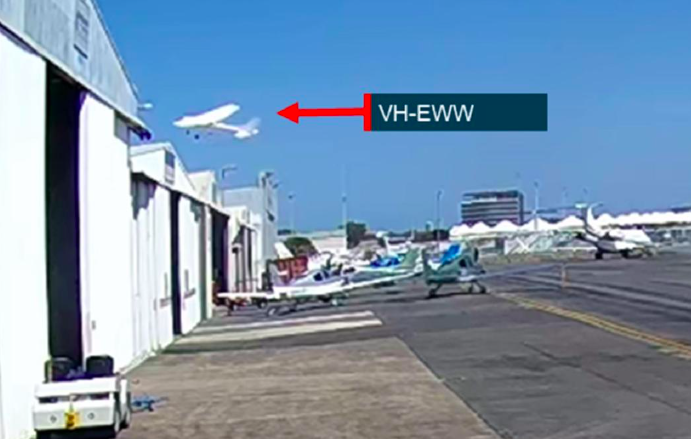Lessons Learned: Cessna 172 Near-Miss After Striking Ground

A Cessna 172 nearly collided with hangars after striking ground.
This happened while the Cessna 172 was going around following a fast and long landing on Gold Coast Airport’s shorter cross runway, an ATSB (Australian Transport Safety Bureau) investigation report details.
On the afternoon of February 6, 2024, a Cessna 172R with a student pilot and flight instructor on board was returning to the Gold Coast at the end of a training flight, with the student receiving an initial air traffic control clearance to track direct to runway 32 (the southern end of Gold Coast Airport’s main runway).
About 40 seconds after that initial clearance, the student and instructor then accepted an amended clearance to track to the shorter runway 35 at ‘best speed.’
Then, when the Cessna was at about 1,000 ft and 1.9 nautical miles from the runway 35 threshold, air traffic control directed the aircraft to maintain ‘best speed all the way in to crossing the runway,’ and the instructor – unsure how to comply – directed the student to reduce throttle to idle and lower the aircraft’s nose.
“The aircraft subsequently passed about 100 ft above the runway threshold at about 25 kt faster than the normal approach speed,” ATSB Director Transport Safety Stuart Macleod said.
“Unable to slow the aircraft down before the runway’s end, the instructor attempted to turn onto taxiway Golf, but the aircraft skidded onto the grass, and the instructor elected to conduct an emergency go-around.”
During the go-around the aircraft’s fuselage struck the ground, and the pilot heard the stall warning horn, so lowered the nose slightly, narrowly clearing a row of hangars.
“Landing with excessive speed is likely to result in the aircraft floating, landing long on the runway, bouncing and/or ballooning, all of which increase the risk of a landing mishap,” Mr. Macleod said.
“Although not standard phraseology, air traffic controllers may ask pilots to maintain ‘best speed,’ and it is up to the pilot to determine what is best in this context, and more generally advise if an instruction is unclear or cannot be complied with.”
The ATSB final report notes the aircraft exceeded the speed for a stabilized approach, but the instructor did not conduct a go-around prior to landing, or while on the runway.
“When operating in visual meteorological conditions, if an approach is not stabilized by the height specified by the operator – or generally by about 500 ft above the ground, or the approach becomes unstable after that point, go around,” Mr. Macleod said.
“Pilots are to always be ready to conduct a go‑around during the approach if any desired flight parameter, such as aircraft configuration, vertical speed, airspeed, or attitude, cannot be achieved.”
Read the final ATSB report: Taxiway excursion, ground strike and near collision with terrain involving Cessna 172R, VH-EWW, at Gold Coast Airport, Queensland on 6 February 2024, publication date: 4/17/2024.



